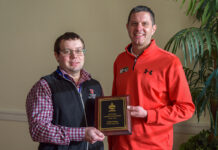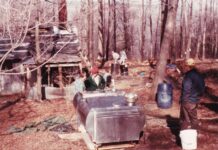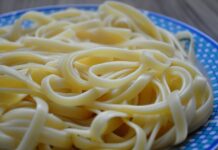The hustle and bustle of summer has arrived. It is time to watch for heat stress in your cows and yourself.
While you may often be concerned about our cows experiencing heat stress, you also need to be concerned about heat exhaustion in yourself showing up after several days of heat exposure without drinking enough fluids.
The symptoms of heat exhaustion are moist, clammy skin, weakness, muscle cramps, headache, dizziness, nausea or vomiting.
If you experience any of these symptoms, seek first aid treatment, move to a cool place, rest with your legs elevated, drink cold water and apply cold packs or wet towels to yourself.
While cows cannot directly tell us they are experiencing heat stress, some signs to be aware of are elevated rectal temperatures above 101.3 F and increased respiratory rates, indicating cows are not dissipating heat properly.
Severe heat stress begins at over 104 F.
Heat stress is estimated to cost the U.S. dairy industry over $900 million per year as a result of decreased milk production, compromised reproductive rates and increased culling.
As dairy producers, how can we monitor heat stress better to help know when our cows are suffering?
One cost-effective option is to monitor respiratory rates and panting every 90 minutes during the heat of the day in multiple locations throughout the barn, such as in free stalls, holding pens and at the feed bunk.
While it is not convenient, you need to check in the middle of the night and first thing in the morning.
One major part of heat stress mitigation is for cows to cool off at night.
Respiration rate is measured by counting flank movement; one full breath includes the inward and outward motion of the flank.
Cool, comfortable cows breathe on average 30 breaths per minute, while a cow that is very hot approaches 100 breaths per minute and is usually panting.
Cows use faster breathing to stay cool with heat stress beginning at 60 breaths per minute.
Before panting, we often see stringy drool, which is definitely a sign that a cow is warm, but it has not been correlated to determine how much stress the cow is in.
There are four primary ways to help cows mitigate heat stress: shade, air movement, sprinkler cooling and ration changes.
When given the option, cows will try to use soakers during heat stress to stay cool.
A study from California found that cows would come to cooling showers when respiration rate was above 50 breaths per minute, and the soaking benefits lasted for the next 4-6 hours.
Cows also come to feed bunk soakers just for the cooling effects.
During the heat of the day, 50% of cows at the bunk line were standing in the soakers not eating.
At night, when it was naturally cool and soakers were not on, only 20% of cows at the feed bunk were not eating.
Effective fan placement and operation is critical to cooling.
To check this, measure wind speed at the cow level in free stalls, at the feed bunk and in holding pens.
Minimum wind speed should be 2.5 mph, with an ideal speed of 5 mph.
In order to keep your fans working properly, be sure to keep fan shutters clean.
Dirty shutters can easily rob you of 8% of the fan’s capacity. When shutters are dirty, they take extra energy to hold open.
Extremely dirty shutters do not open the whole way and are not keeping your cows cool, wasting energy and shortening motor life.
Watch for worn belts and pulleys, they will begin to slip, causing fans to run slower.
Tensioners not working freely also cause this.
While most of the focus on heat stress mitigation has been on the milking herd, there has been a major focus recently on the effects of heat stress during late gestation on the cow and her calf.
A study from Florida showed that calves born to dams who experienced heat stress during the dry period had a 10% greater probability of leaving the herd.
These calves were 10.4% lighter at birth and 10.3% lighter at weaning than those born to dams who were cooled during the dry period. These calves had lower milk yields in the first and second lactation.
The dam who experienced heat stress late in gestation had lower milk production in the following lactation and had lower Colostrum IgG levels.
Keeping milking and dry cows cool can be a great return on investment.














That’s a good idea to use water to cool down the cows if they are too hot. I could see how that would help prevent them from getting too hot and becoming unhealthy. I should consider getting a system set up to do that if I get start a dairy farm, so I could make sure that the cows stay healthy.